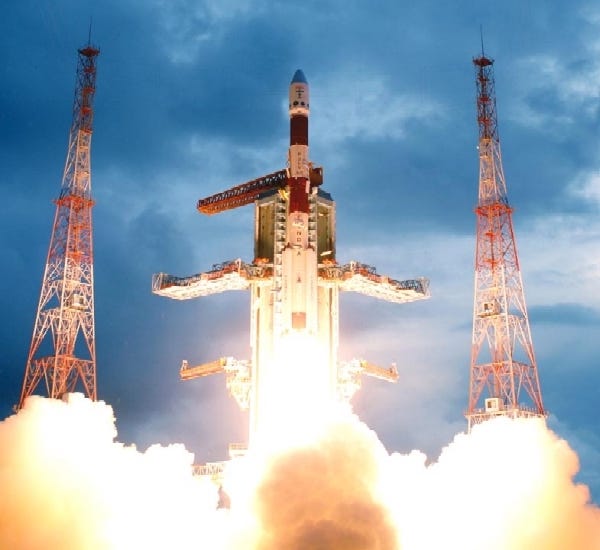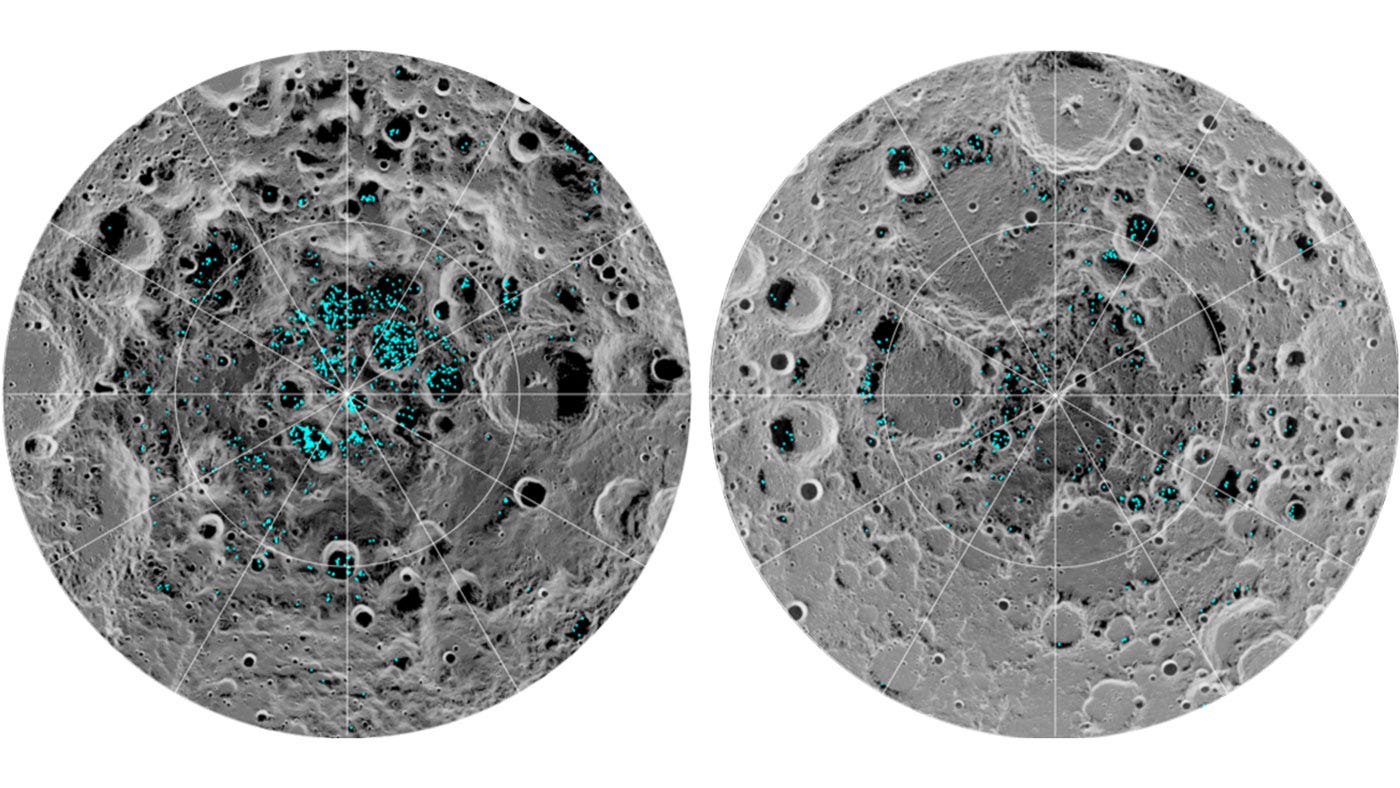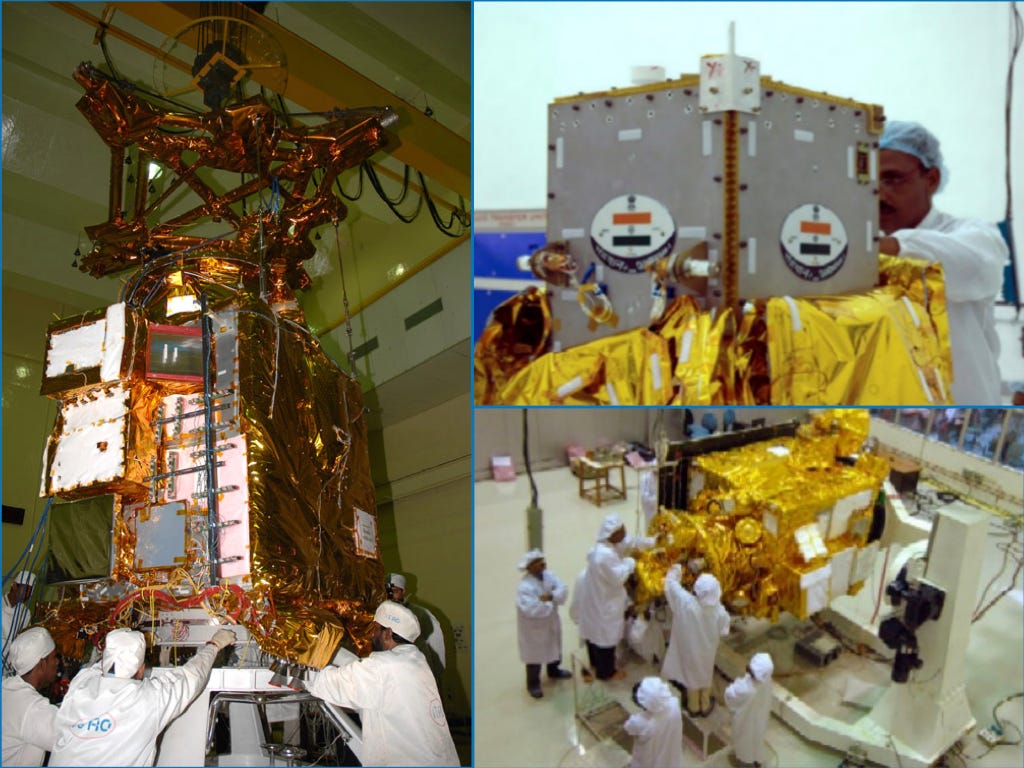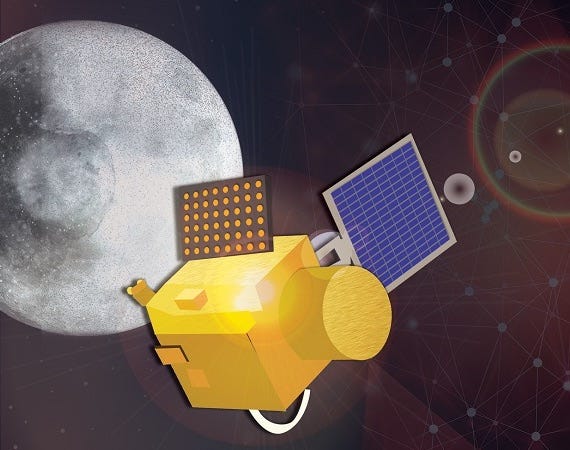Looking back at Chandrayaan 1 and forward to Artemis
India’s first Moon mission discovered lunar water, and catalyzed plans by nations worldwide to further explore our cosmic neighbor.
On October 22, 2008, an Indian PSLV rocket launched the Chandrayaan 1 spacecraft into Earth orbit. After a series of orbit-raising maneuvers, Chandrayaan 1 successfully entered orbit around the Moon on November 8 of that year, marking India’s foray into planetary exploration.
Over the next four days, it fired its engines multiple times at precise intervals to attain a circular orbit of 100 kilometers so it can closely study the Moon with its 11 instruments, roughly half of which came from NASA and space agencies in Europe. Communication with the orbiter was lost on August 29, 2009 but the mission’s key objectives were met, including discovering water on the Moon.

Why did India launch Chandrayaan 1?
The Mission Director of Chandrayaan 1, Srinivasa Hegde, recalls the mission’s inception in an interview:
Dr. K. Kasturirangan, who chaired the Indian Space Research Organization (ISRO) from 1994 to 2003, wanted the organization to play a small role in India’s ambition to become a superpower. This planted the seed for undertaking more ambitious missions. The idea of a Moon orbiter was floated around and was received positively by everyone.
At the time, ISRO already had geostationary satellites, which have plenty of fuel. The basic infrastructure was ready and the only change required was adapting it for the Moon. Initial calculations showed that our PSLV rocket could provide an Earth-bound orbit beyond which the fuel on the spacecraft could be used to go to the Moon and perform orbital capture. In all, Chandrayaan 1 seemed like a logical extension of our capabilities.
How did Chandrayaan 1 discover water on the Moon?
Finding water on the Moon was a primary scientific objective when ISRO was planning Chandrayaan 1. Space agencies globally were keen to confirm water’s presence, hopefully in relatively large amounts, as that would have implications for future human settlements as well as the Moon’s origin. NASA pitched and got to fly two of its water-hunting instruments on Chandrayaan 1.
Their Miniature Synthetic Aperture Radar (Mini-SAR) found the patterns of reflected signals from more than 40 polar craters to be consistent with water ice. But just like with previous efforts such as NASA’s Clementine Moon-mapping orbiter, the data wasn’t bulletproof. But NASA’s Moon Mineralogical Mapper (M3) on Chandrayaan 1 could differentiate between ice, liquid water, and water vapor based on how the lunar surface reflected and absorbed infrared light. It was M3 that confirmed our Moon hosts water once and for all, and found the majority of it is concentrated on the poles.

M3 was also an excellent mineral mapper; its data has helped scientists worldwide churn out hundreds of publications and counting. Noah Petro, the Project Scientist for NASA’s Lunar Reconnaissance Orbiter (LRO), noted in 2019:
10 years ago today Chandrayaan-1 ended. I was so lucky to be a small part of that mission. The M3 instrument allowed us to take a huge step forward in learning about the composition of our 8th continent!
Among the many more scientific results from other Chandrayaan 1 instruments, the Indian, Swedish, and European Space Agency’s (ESA) collaborative instrument SARA stands out. By analyzing how protons (hydrogen nuclei) in the solar wind impact the Moon and get reflected, SARA helped scientists better estimate the amount and distribution of water or hydroxyl locked in the soil across the Moon. The discovery proved timely for ESA’s BepiColombo mission to study Mercury, which carries two similar instruments for detecting water.
Chandrayaan 1’s impact on lunar exploration
Chandrayaan 1’s discovery of lunar water helped revitalize global interest in exploring our Moon. This includes NASA’s Artemis plans to return humans to the Moon and use resources like water to sustain future habitats as well as the flurry of upcoming robotic missions seeking the exact nature, state, and amount of lunar water.
There’s India’s own Chandrayaan 2 orbiter, which is using its advanced radar to better map and quantify water ice on the Moon’s poles. South Korea’s first lunar orbiter KPLO will also help detect vast polar water ice deposits using its ultrasensitive camera. NASA’s Lunar Trailblazer orbiter will particularly map the form, abundance, and changes in water in sunlit regions on the Moon.
Surface missions like NASA’s upcoming VIPER rover will take a much closer look by physically studying water ice inside polar permanently shadowed regions, which will start to inform us on how to extract the water to sustainably live on the Moon. VIPER’s findings will set the stage for NASA’s Artemis campaign, which envisions an eventual long-term human presence on our Moon.
Cost and collaboration
A less-noticed impact of the Chandrayaan 1 mission is its total cost of less than $100 million coupled with its collaboration model. As evident by the mission’s discoveries, welcoming foreign instruments proved effective in increasing mission science without increasing costs.
From the perspective of the participating agencies, they got to fly their instruments without having to build an entire mission of their own. At the same time, experience gained by ISRO in developing planetary instruments by collaborating with NASA and ESA helped them make fully indigenous, state-of-the-art instruments for the Chandrayaan 2 orbiter. South Korea is now following this very model for its first lunar orbiter KPLO.

What technologies did ISRO develop for Chandrayaan?
Chandrayaan 1 was the first time India explored another world. To materialize the mission, ISRO developed a number of new technologies. They established the Indian Deep Space Network to communicate with the spacecraft, and made the Indian Space Science Data Center to process and archive scientific data from the mission. Future missions like India’s popular Mangalyaan Mars orbiter would go on to leverage this infrastructure. Even Chandrayaan 1’s spacecraft structure design formed the basis for Mangalyaan. Later this decade, ISRO also intends to launch a Venus orbiter.
In the decade since Chandrayaan 1 pioneered lunar orbit for India, the country attempted a Moon landing with Chandrayaan 2 but the spacecraft unfortunately crashed at the last moment. ISRO will retry landing with Chandrayaan 3 next year. The Japanese and Indian space agencies will be launching a joint mission in 2024 or later called Lunar Polar Exploration (LUPEX) to explore water and other resources on the Moon’s south pole using a rover.
In all, Chandrayaan 1 launched not just a science orbiter to the Moon but India’s planetary program while also catalyzing global interest in our cosmic neighbor.

Originally published at The Planetary Society.
→ Browse the Blog | About | Donate ♡
